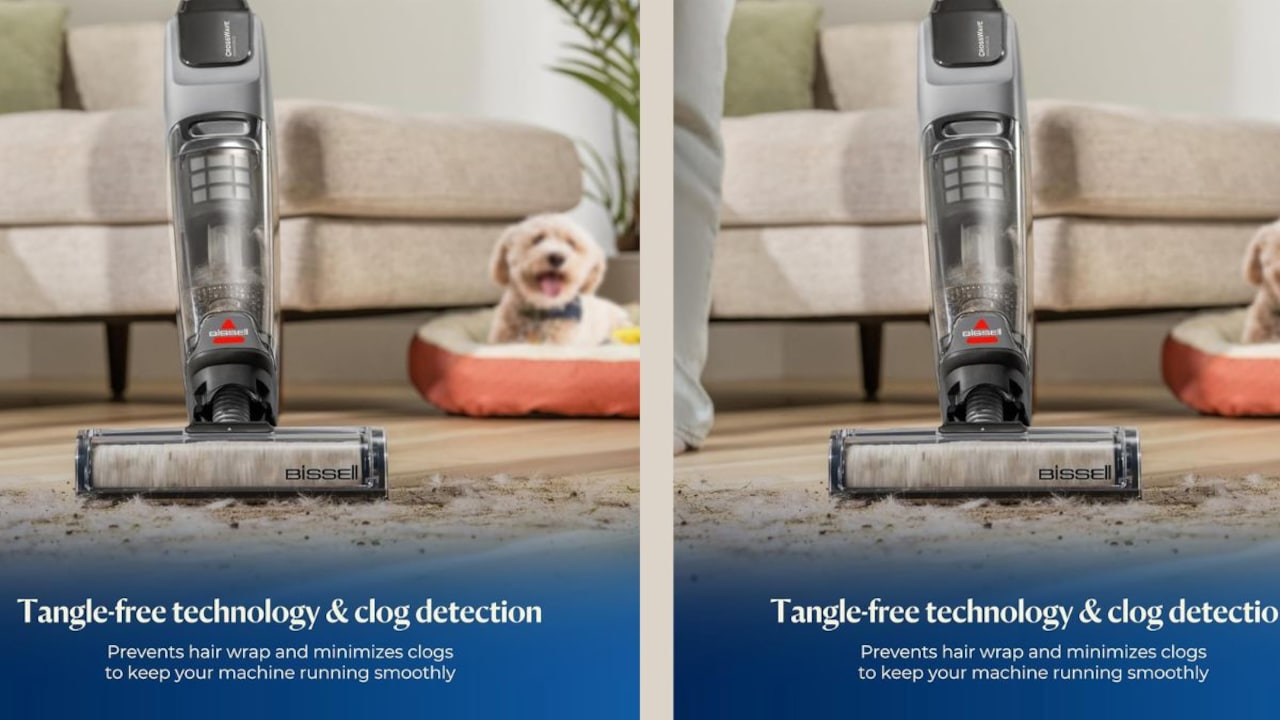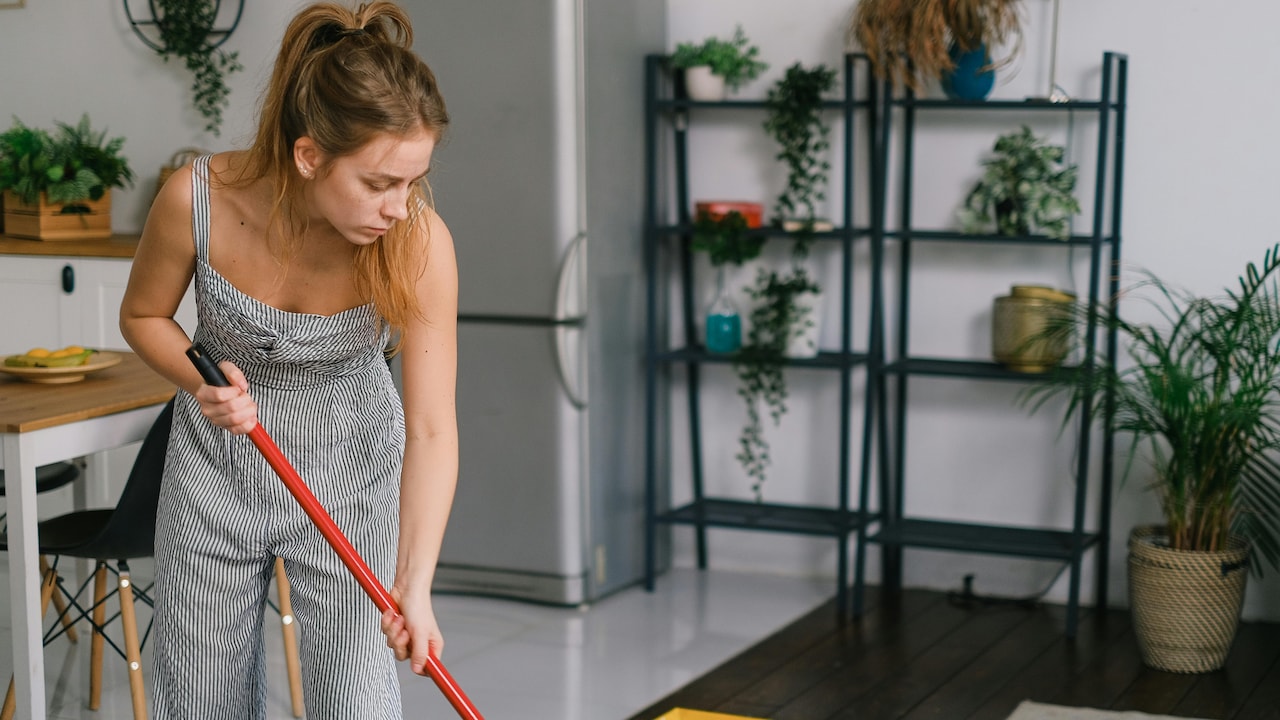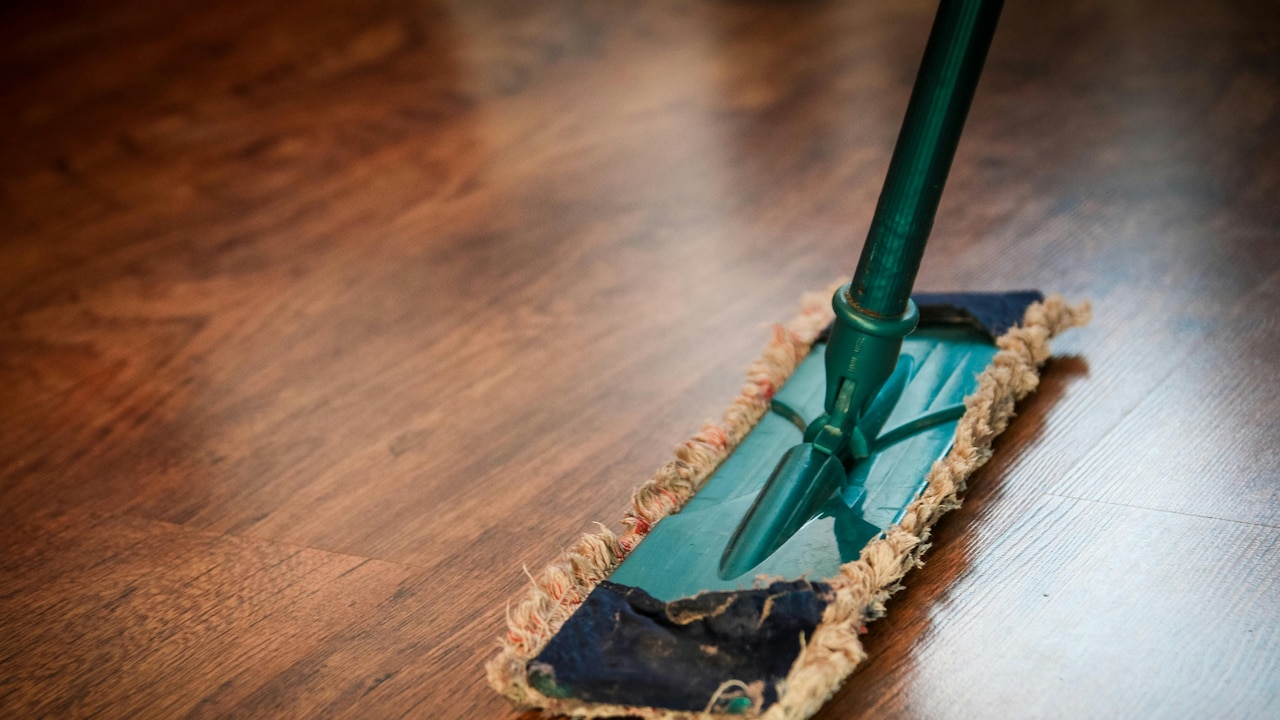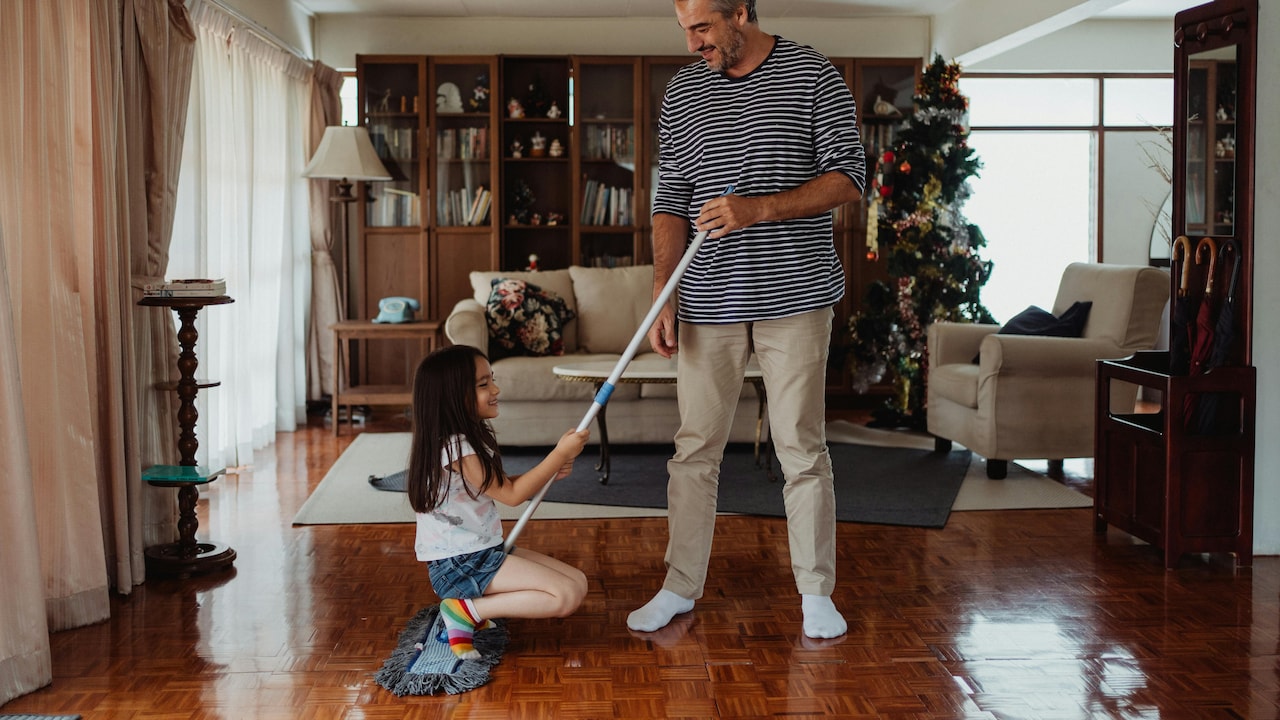How To Pick A Steam Mop That Works On Both Tiles And Wooden Floors
Let's explore what makes a steam mop floor cleaner truly versatile, and how to choose one that fits perfectly into your home and lifestyle. Also, check top picks from Karcher, Inalsa to Lifelong.

Best Steam Mops For Tiles And Wooden Floors: How To Choose The Perfect One For Your Home.
There's something deeply comforting about freshly cleaned floors, the faint scent of cleanliness, the subtle shine that catches the light, and that undeniable sense of order that follows. But anyone who has tried to clean both tiles and wooden floors knows the struggle. Tiles can take a good scrubbing, but wooden floors? They're a bit like silk, beautiful, but demanding care and respect.
That's where steam mops come in. They promise spotless floors with minimal effort, no harsh chemicals, and faster drying times. Yet, not every steam mop is made equal. Some are too harsh for wood; others barely lift the grime from tiles. The key is finding one that balances both, a device that treats your wooden floors with tenderness while tackling the stubborn stains on tiles.
Here are 10 important things to know about steam mops before buying one. Also, check top picks from Karcher, Inalsa to Lifelong.

Crucial things to know before buying steam mops; Photo Credit: Amazon
How To Pick A Steam Mop
1. Understanding How Steam Mops Work
Steam mops sound almost magical: a puff of steam, a gentle glide, and your floor sparkles. But there's solid science behind that charm. Unlike traditional mops that rely on detergents, a steam mop uses heated water to create steam. This steam loosens dirt, kills bacteria, and lifts grime without leaving chemical residues.
On tiles, it blasts away sticky messes and muddy footprints, while on wooden floors, it sanitises gently, provided the moisture is well controlled. The trick lies in temperature and steam regulation. Too much heat, and wooden floors may warp or lose their polish; too little, and tiles may stay dull.
A good steam mop should have adjustable steam settings. This gives control, a higher burst for tiles, a gentler mist for wooden planks. Think of it as adjusting the flame while cooking; precision makes all the difference.
2. Prioritise Adjustable Steam Control
Wooden floors and tiles may share your home, but they don't share the same temperament. Tiles can handle intense steam, but wooden floors require gentleness, too much heat or water can spell trouble. That's why adjustable steam control isn't just a fancy feature; it's essential.
Imagine cleaning your kitchen tiles after a spicy curry spill, you'll need full steam power. Then, moving to the bedroom with polished wooden flooring, you must tone it down. A good steam mop should make this switch effortless.
Models with variable steam settings or trigger controls allow you to release steam only when needed. This not only protects delicate surfaces but also saves water and power. When shopping, check if the mop has at least two or three levels of control. It's a small feature that makes a big difference in ensuring your floors stay spotless and safe.
3. Check Compatibility with Sealed Wooden Floors
Not all wooden floors welcome steam. Unsealed or unfinished wood absorbs moisture easily, leading to swelling or discolouration. Sealed wooden floors, however, can handle controlled steam cleaning beautifully. So, before even choosing a mop, check what kind of flooring you have.
If your wood is sealed, usually with a protective coating or polish, you're good to go. But even then, opt for steam mops that specifically mention compatibility with wooden floors. These are designed to maintain lower moisture output and come with microfiber pads that glide smoothly without scratching.
A quick test? Drop a small amount of water on your floor. If it beads up, your floor is sealed. If it sinks in, stick to dry cleaning methods instead.
A versatile steam mop will state clearly: “Safe for sealed wood.” It's a phrase worth trusting, your floors will thank you later.

Don't forget to check compatibility with sealed wooden floors; Photo Credit: Pexels
4. Choose Quality Microfibre Pads
A steam mop is only as good as its cleaning pad. Microfibre pads are the unsung heroes of spotless floors. They trap dirt, absorb moisture, and polish surfaces without scratching them. When used on tiles, they lift grime efficiently; on wood, they provide a soft touch that maintains shine.
Avoid mops that use low-quality or single-use pads. They might look cost-effective initially but wear out quickly, forcing replacements every few weeks. Look for reusable, machine-washable microfibre pads, they're eco-friendly and economical.
It's wise to keep extra pads handy, especially in monsoon months when floors tend to get grimier. A good tip? Assign separate pads for tiles and wooden floors to avoid cross-contamination. It's a small step that keeps your home fresher and your floors flawless.
5. Look for Lightweight and Easy Manoeuvrability
Cleaning shouldn't feel like a workout. A good steam mop should glide, not drag. Lightweight models are far easier to handle, especially when shifting between rooms or different flooring types. Imagine mopping the living room tiles, then smoothly moving to the bedroom's wooden flooring, no heavy lifting or arm strain required.
Choose a mop with a swivel head and ergonomic handle. These allow smooth movement around furniture, corners, and tight spaces. Cord length matters too, a longer cord (at least 5–6 metres) saves you from constant plug-switching.
Remember, the goal isn't just clean floors, it's effortless cleaning. A steam mop that moves easily keeps the task enjoyable, not exhausting. After all, no one wants to feel like they've done a gym session after mopping on a Sunday morning!
Also Read: Steam Mop Vs Regular Mop: Uncovering The Best Tool For Your Home
6. Evaluate Heating Time and Water Tank Capacity
Patience may be a virtue, but no one likes waiting ages for their mop to heat up. The best steam mops heat within 20–30 seconds, allowing instant action on spills or muddy paw prints.
Water tank capacity also plays a role. A larger tank (around 400–500 ml) means longer cleaning sessions without refilling. However, balance is key; a huge tank adds weight. For homes with mixed flooring, a medium-sized tank works perfectly.
Transparent or detachable tanks are a bonus, they make refilling easier and prevent accidental overflows. Some advanced models even have “refill while in use” systems, which save time during big cleaning sprees.
In short, look for efficiency. The faster it heats and the longer it runs, the smoother your cleaning rhythm becomes.

Always check for heating time and water tank capacity; Photo Credit: Pexels
7. Consider Versatility and Attachments
A truly smart investment is a steam mop that multitasks. Some models come with attachments that transform them into handheld cleaners for bathroom tiles, windows, upholstery, and even kitchen counters.
These extras aren't gimmicks, they add genuine value, especially in homes with varied cleaning needs. A small brush attachment helps tackle grout lines on tiles, while a soft nozzle can freshen up curtains.
If your home mixes materials, say, marble in the kitchen, tiles in the bathroom, and wood in the bedroom, such versatility saves both time and storage space. You won't need separate tools cluttering your cupboards.
When choosing, check for detachable heads, flexible hoses, and a good range of nozzles. It's like buying one gadget that quietly replaces five others, efficient, space-saving, and surprisingly satisfying.
8. Energy Efficiency and Power Rating
Power rating matters more than most people realise. A higher wattage mop (around 1500–1800W) typically produces steam faster and at higher pressure, ideal for tiles. But wooden floors prefer gentle warmth. That's where adjustable power modes prove handy.
Energy efficiency also counts, especially if cleaning is part of your weekly ritual. Models with energy-saving features or auto shut-off functions can cut electricity costs. After all, no one wants an inflated electricity bill just for sparkling floors.
If possible, check for certifications or customer reviews mentioning power efficiency. It's the kind of detail that doesn't look glamorous on a box but makes a difference in the long run, both for your wallet and the environment.
9. Maintenance and Durability
A steam mop should simplify life, not add more chores. Before buying, check how easy it is to clean the mop itself. Detachable parts, washable pads, and descaling reminders (for areas with hard water) are great features to have.
Durability often comes down to build quality. Look for sturdy handles, reliable seals around the water tank, and brands known for after-sales service. Spending a little more upfront on a trusted brand often saves repair costs later.
Regular maintenance keeps your mop performing like new. Use filtered or distilled water to prevent limescale build-up, a simple trick that prolongs lifespan.
When taken care of, a quality steam mop can serve faithfully for years, turning a once-dreaded task into a satisfying ritual.

Ensure that the mop is easy to maintain
Photo Credit: Pexels
10. Compare Prices and Warranty Before Buying
Price isn't everything, but it's certainly something. Steam mops in India range anywhere from ₹3,000 to ₹15,000, depending on brand and features. The key is to find one that delivers real value, efficient cleaning, durability, and versatility.
Avoid being lured by fancy packaging alone. Compare features side by side, steam control, attachments, heating time, and warranty. A one-year warranty is standard, but some premium models offer up to two years. That's worth the investment.
Consider brands with reliable service centres nearby. Quick repairs or part replacements can save frustration later.
In the end, the best steam mop isn't always the most expensive one, it's the one that fits your home's needs, makes cleaning easier, and brings that little spark of satisfaction every time you glide it across the floor.
Products Related To This Article
1. NexLev Steam Mop | Chemical Free Mopping
2. INALSA Multi Purpose Steam Cleaner Comes with 2 Mop Cloth and Carpet Slider
3. NexLev 10 in 1 Steam Cleaner & Mop|2 Steam Modes
4. Karcher SC 3 Upright Easyfix Steam Cleaner
5. CPENSUS 10 in 1 Steam cleaner for home 1200W & 10s Heat up 750 ml Water tank Handheld for Deep Cleans Floor
6. Lifelong Electric Mop for Floor Cleaning
7. ATVEL F40 Steam 3-in-1 Corded Wet Dry Vacuum Cleaner
Choosing the right steam mop for both tiles and wooden floors isn't about chasing the fanciest gadget; it's about finding balance. Balance between power and gentleness, speed and care, technology and simplicity.
The perfect mop understands that your floors are more than just surfaces; they're part of your home's personality. Tiles reflect everyday hustle, busy kitchens, rainy footprints, the occasional spilt chai. Wooden floors, on the other hand, whisper warmth and calm, demanding a softer touch.
A good steam mop respects both. With adjustable steam, quality pads, quick heating, and thoughtful design, cleaning stops feeling like a chore and starts feeling like care, care for the place that holds your stories, laughter, and life.
So, the next time you're browsing for that sleek new steam mop, remember, it's not just about cleaning floors; it's about keeping your home shining, one gentle puff of steam at a time.
























